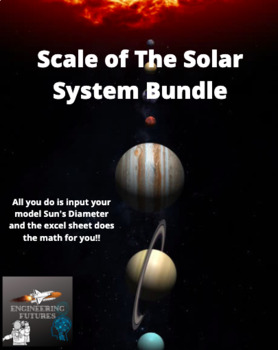Scale of the Solar System: Bundle
Engineering Futures
69 Followers
Resource Type
Standards
NGSSMS-ESS1-2
NGSSMS-ESS1-3
Formats Included
- Zip
Pages
7 pages
Engineering Futures
69 Followers
Products in this Bundle (2)
Description
This bundle includes my Scale of the Solar System Lab and Scale of the Solar System Excel Sheet. These two resources will allow you to accurately scale-out our Solar System. All you need to do is input your model Sun and walk off the distances. Bewarned, the bigger your model Sun, the longer you will have to walk! This is a great lab for all ages and I hope you all enjoy it!
Total Pages
7 pages
Answer Key
Included
Teaching Duration
N/A
Report this resource to TPT
Reported resources will be reviewed by our team. Report this resource to let us know if this resource violates TPT’s content guidelines.
Standards
to see state-specific standards (only available in the US).
NGSSMS-ESS1-2
Develop and use a model to describe the role of gravity in the motions within galaxies and the solar system. Emphasis for the model is on gravity as the force that holds together the solar system and Milky Way galaxy and controls orbital motions within them. Examples of models can be physical (such as the analogy of distance along a football field or computer visualizations of elliptical orbits) or conceptual (such as mathematical proportions relative to the size of familiar objects such as students’ school or state). Assessment does not include Kepler’s Laws of orbital motion or the apparent retrograde motion of the planets as viewed from Earth.
NGSSMS-ESS1-3
Analyze and interpret data to determine scale properties of objects in the solar system. Emphasis is on the analysis of data from Earth-based instruments, space-based telescopes, and spacecraft to determine similarities and differences among solar system objects. Examples of scale properties include the sizes of an object’s layers (such as crust and atmosphere), surface features (such as volcanoes), and orbital radius. Examples of data include statistical information, drawings and photographs, and models. Assessment does not include recalling facts about properties of the planets and other solar system bodies.


